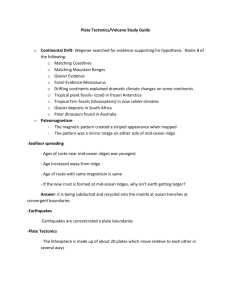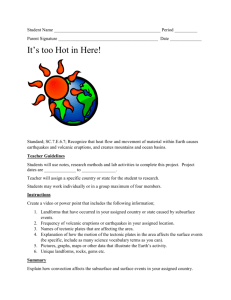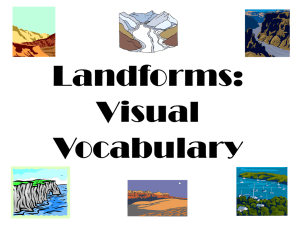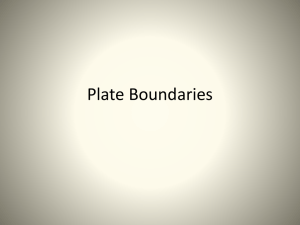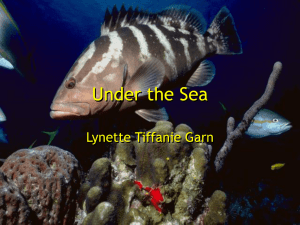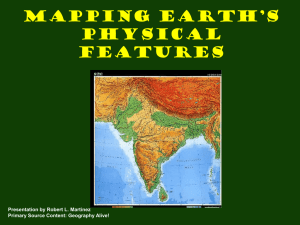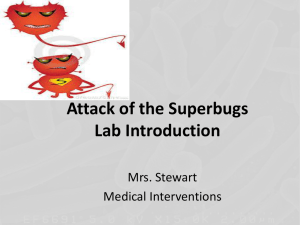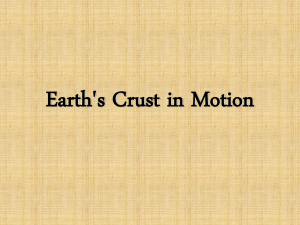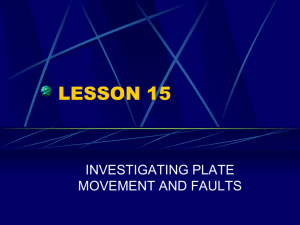Landforms PowerPoint
advertisement
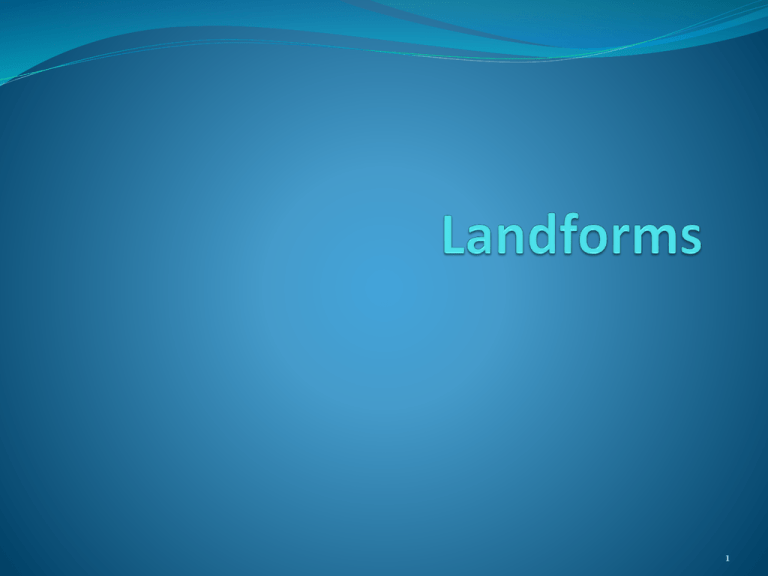
1 Landforms Created by Plate Motion Massive, slow-moving tectonic plates have so much force they can build tall mountains, form deep valleys and rip Earth’s surface apart Compression, tension, and shear stresses each produce a different type of landform 2 Landforms Created by Compression The largest landforms on Earth are produced by compression at convergent plate boundaries A collision between 2 continental plates can produce tall mountains that form slowly in stages over millions of years The plates beneath India and Asia Started almost 50 million years ago 3 Landforms Created by Compression Because the plates are still colliding, the Himalayas grow a few millimeters each year due to compression 4 Compression When 2 plates collide, one can go under the other and be forced into the mantle in a process called subduction Ocean trenches are deep, underwater troughs created by one plate subducting under another plate at a convergent plate boundary Ocean trenches are the deepest places in the Earth’s oceans 5 Volcanic Arc Volcanic Mountains can form in the ocean where plates converge and one plate subducts under another one. The curved line of volcanic islands that forms parallel to a plate boundary is called a volcanic arc. Volcanic arcs can also form on continents. 6 Volcanic Arcs 7 Landforms Created by Tension A long, tall mountain range that forms where oceanic plates diverge is called a mid-ocean ridge When divergent boundaries occur within a continent, they can form continental rifts, or enormous splits in the Earth’s crust 8 Landforms Created by Tension 9 Landforms created by Shear Stress Transform Faults form where tectonic plates slide horizontally past each other The yellow line on the map shows the mid-ocean ridge. The red lines are transform faults. 10 Fault Zone Some transform faults can be seen at Earth’s surface, such as San Andreas Fault in California. San Andreas Fault is not a single fault, but many smaller faults in the area around it. An area of many fractured pieces of crust along a large fault is called a fault zone. 11 Fault Zone 12
